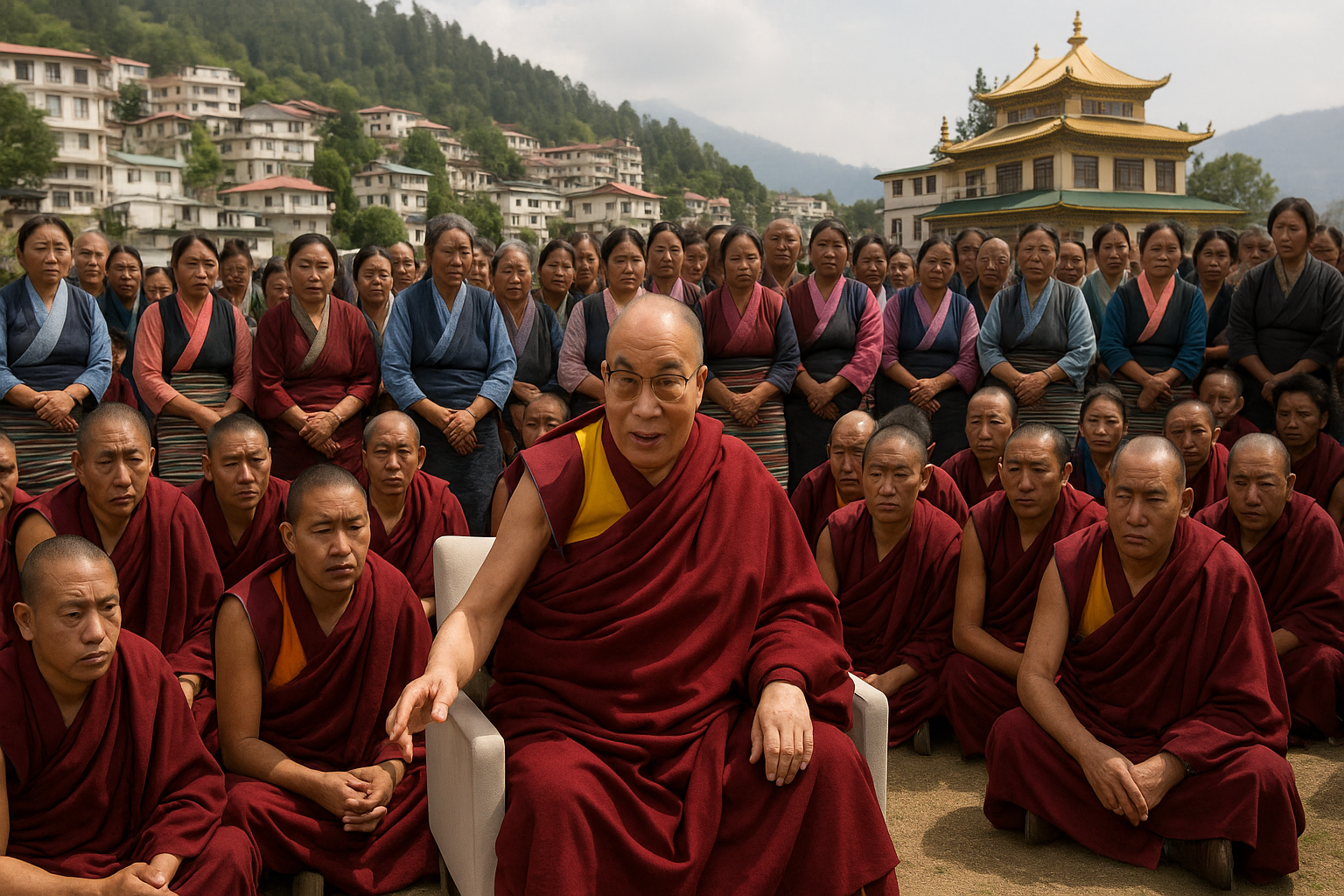When the 14th Dalai Lama crossed into Arunachal Pradesh in March 1959, fleeing a crushed uprising in Lhasa, few could have imagined that the Himalayan foothills of India would become the heart of the Tibetan world in exile. More than six decades later, the story of Tibet in India is one of resilience, adaptation and enduring bonds across the mountains.
Little Lhasa and Beyond
Perched in Himachal Pradesh, Dharamshala has become synonymous with Tibet. The town, often called “Little Lhasa,” hosts the Central Tibetan Administration (CTA), the Dalai Lama’s residence, and a network of monasteries, schools and cultural institutions. From its winding lanes filled with prayer flags and momo stalls, the exiled Tibetan community has kept alive the rhythms of a homeland it cannot return to.
But Dharamshala is only the beginning. Karnataka’s Bylakuppe and Mundgod are the largest Tibetan settlements outside Tibet, with sprawling monasteries such as Namdroling and Drepung housing thousands of monks. In Delhi, Majnu-ka-Tila has grown into a vibrant hub for Tibetan students, traders and professionals. Across Ladakh, Sikkim, Uttarakhand and Arunachal Pradesh, communities with centuries of Himalayan Buddhist ties have welcomed Tibetans as kin.
Culture in Exile
For a community uprooted, cultural preservation has been both necessity and survival. The Tibetan Children’s Village schools ensure younger generations learn not just English and Hindi, but also Tibetan language, history and values. The Tibetan Institute of Performing Arts (TIPA) in Dharamshala revives folk opera, while Men-Tsee-Khang — the Tibetan Medical and Astro Institute — keeps alive the ancient Sowa-Rigpa system of healing.
Monasteries across India continue to attract students from Tibet, Bhutan, Mongolia and the West, making India not just a host country, but the global centre of Tibetan Buddhism. Pilgrimage links to Bodh Gaya, Sarnath and Tawang only deepen the spiritual bridge between the two civilisations.
Living Between Worlds
Yet, exile has also meant adjustment. Legally, Tibetans in India are considered foreigners, holding Registration Certificates and special Identity Certificates for travel. They cannot easily own land or apply for government jobs. Over time, however, reforms have opened doors to higher education, entrepreneurship and even Indian passports for those who choose.
For Tibetan youth, the challenge is sharper. Many are fluent in Hindi and English, social media-savvy and ambitious — yet carry the weight of a displaced identity. Older generations speak of returning to Tibet; younger ones often look abroad for opportunities. The question of “home” remains layered: Dharamshala may be where they reside, but Tibet is what they carry with them.
Geopolitics and a Gentle Balance
India’s embrace of Tibetans has been generous, but also carefully calibrated. While Delhi recognises Tibet as part of China, it continues to allow the Dalai Lama and the CTA to operate freely. This duality reflects India’s delicate balancing act — offering refuge without overtly challenging Beijing.
At the same time, Tibet remains a subtle factor in India–China relations. The Dalai Lama’s visits to Arunachal Pradesh or statements on Tibet’s future often trigger sharp responses from Beijing. For India, the Tibetan presence is both a humanitarian commitment and a quiet reminder of unresolved history across the Himalayas.
A Bridge Across the Himalayas
More than sixty-five years on, the Tibetan story in India is less about exile and more about continuity. A new generation of monks debates philosophy in the halls of Indian monasteries. Tibetan medicine is practised alongside Ayurveda. Festivals like Losar are celebrated from Dharamshala to Delhi. And in the chants echoing through Himalayan valleys, Tibet lives on.
For India, hosting the Tibetan community has meant more than sheltering refugees. It has created a living bridge across the Himalayas — one that reinforces cultural kinship, enriches India’s plural identity, and keeps alive the hope that one day, the mountains will no longer divide.


I am truly thankful to the owner of this web site who has shared this fantastic piece of writing at at this place.
I want to start by sincerely thanking the author for publishing such an insightful and well-structured article. Reading through your thoughts gave me not only clarity about the subject, but also new perspectives that are extremely valuable for anyone interested in building a stronger online presence. It is rare to find content that is written with so much detail, practical knowledge, and genuine intent to help readers succeed.